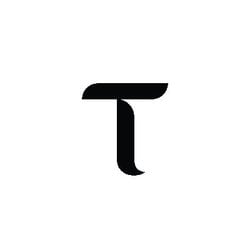Step-by-Step Onboarding
Purchasing a home treadmill can be an exciting step towards achieving your fitness goals. Most treadmills allow you to input your age, weight, and fitness goals.
Behind-the-Scenes Technology
Treadmills may seem straightforward, but they are equipped with advanced technology that enhances your workout experience. Consult the user manual for explanations of specific error codes and recommended actions.
Summary Flowchart
To summarize the operational process of a treadmill, here’s a simplified flowchart:
- Unbox and Assemble
- Plug in the Treadmill
- Initial Setup
- Connect to Wi-Fi
- Sync with App
- Choose Workout Program
- Start Workout
- Monitor Progress
- Troubleshoot if Necessary
- Enjoy Your Workout!
- Troubleshoot if Necessary
- Monitor Progress
- Start Workout
- Choose Workout Program
- Sync with App
- Connect to Wi-Fi
- Initial Setup
- Plug in the Treadmill
By understanding how top treadmills for home work, users can make informed decisions about their fitness journey and efficiently utilize their equipment to achieve optimal results. best in home treadmill for walking best treadmills for home
Adjust settings such as the incline, speed, and workout programs according to your fitness level.
Behind-the-Scenes Technology
A treadmill consists of several components that work together to create a smooth workout experience.
By following the steps outlined above, you can create a safe and effective walking routine right from the comfort of your home. best at home treadmill
Here’s a closer look at the essential components:
- Motor: The motor powers the belt and determines the speed of your workout. A powerful motor ensures smooth operation and can support various speeds.
- Belt System: The running surface where you walk or run. Modern consoles often have LCD screens for easy navigation.
- Heart Rate Monitors: Many commercial treadmills come equipped with sensors that track your heart rate, allowing you to maintain your target heart rate zone during your workouts.
- Connectivity: Some models offer Bluetooth or Wi-Fi capabilities, enabling you to sync with fitness apps, track your progress, and even access virtual workouts.
User Inputs & Outputs
When using a commercial treadmill, user interaction is crucial for optimizing your workout. In this article, we will explore the functionality of home treadmills, focusing on the best practices for walking workouts.
Users can then power it on using the console button.
- Motor: The heart of any treadmill, the motor drives the belt and determines speed.
Follow the manual instructions to ensure accurate speed and distance readings.
- Test Run: Start with a low speed to test the treadmill functionality. Here are some common problems and troubleshooting tips:
- Treadmill Won’t Start: Ensure the power cord is securely plugged in and check the circuit breaker. Advanced models offer interactive screens and connectivity to fitness apps.
- Incline Mechanism: Many treadmills feature an incline option, which simulates uphill running. With regular use and proper care, a home treadmill can be an invaluable tool in your fitness journey.
Treadmills may have incline settings, while bikes can offer magnetic resistance.
- Heart Rate Monitors: Many machines come equipped with sensors to track your heart rate, helping you stay within your target heart rate zone for optimal fat burning and cardiovascular health.
- Console Display: The display provides real-time feedback on metrics such as speed, distance, calories burned, and heart rate, allowing users to track progress.
- Smart Technology: Some modern machines include connectivity options for fitness apps, enabling users to sync their workouts and monitor progress over time.
User Inputs & Outputs
Understanding how user inputs translate into outputs can help optimize your cardio workouts.













